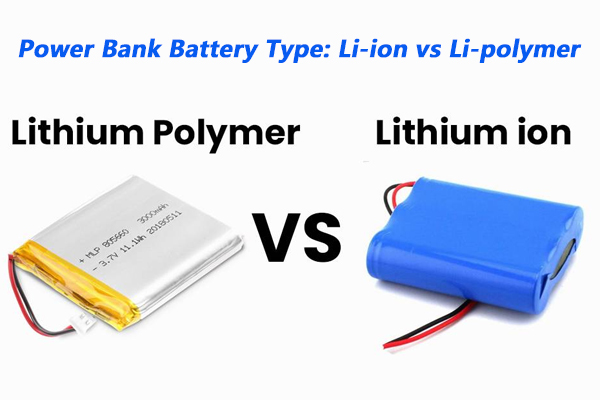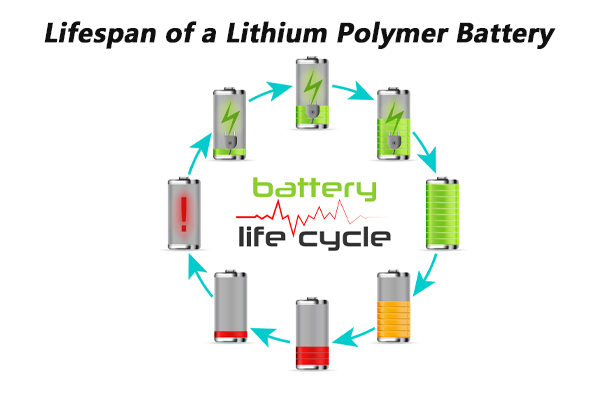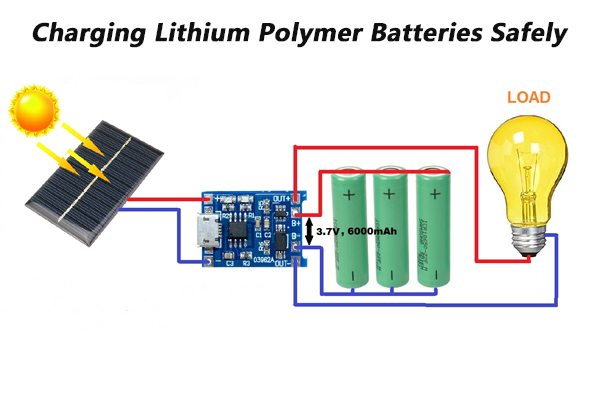Która bateria jest najlepsza? Litowo-jon lub polimer litowy?
Wybór między tym, co ludzie często nazywają „litowo-jonowym" i „litowo-polimer" Baterie mogą być mylące. Być może zastanawiasz się, co naprawdę ich wyróżnia, gdy patrzysz na moc dla swoich urządzeń lub nawet większych projektów energetycznych. Dekodujemy te typy baterii, aby pomóc Ci mądrze wybierać i zrozumieć, co zasila Twój świat.
Prawda jest, Nie jest też uniwersalnie „najlepsze." Chodzi więcej o to, co lepiej pasuje do konkretnej potrzeby. „Litowo-jon" Jako ogólny termin często przywołuje znane cylindryczne komórki (Jak 18650) lub komórki pryzmatyczne, które używają ciekłego elektrolitu. „Litowo-polimer" (Często skracane do Lipo, Li-po, lub warga) baterie, z drugiej strony, Użyj elektrolitu polimerowego (żel lub substancja stała). Ta fundamentalna różnica pozwala na tworzenie baterii Lipo w bardzo elastycznym, cienki, Kształty przypominające woreczki. Więc, LIPO oferuje niesamowitą wszechstronność w kształcie i może być lżejsza dla swojej pojemności, podczas gdy tradycyjne komórki litowo-jonowe mogą być bardzo opłacalne, solidny, i oferuj dużą moc do niektórych zastosowań. Ważne jest również, aby od samego początku wiedzieć, że litowo-polimer jest w rzeczywistości typ baterii litowo-jonowej, Ale rozróżnienie w elektrolicie i konstrukcji prowadzi do ich różnych cech i nazwy zwyczajowych.

Tutaj w Gycx Solar, Radzimy sobie z różnymi technologiami baterii, I wiemy, że zrozumienie niuansów może ci pomóc, Nasi klienci - niezależnie od tego, czy jesteś właścicielem domu, patrząc na pamięć słoneczną, Firma wymagająca niezawodnej kopii zapasowej, Hurtowe elementy pozyskiwania, a nawet po prostu ciekawy technologii. Zajmijmy się niektórymi z typowych pytań, które pojawiają się podczas porównywania tych dwóch.
Dla jasności w tym artykule, Kiedy mówię „tradycyjny lit-jon," Będę odnosić się do osób z ciekłymi elektrolitami w sztywnych osłonkach (Jak cylindryczny 18650 lub komórki pryzmatyczne), i „Lipo" dla osób z elektrolitami polimerowymi, Często w elastycznych formatach torebek, ponieważ odzwierciedla to, w jaki sposób te terminy są powszechnie stosowane w porównaniach.
Rozróżniam definicje w ten sposób, ponieważ w ten sposób ludzie zwykle używają terminów w codziennych dyskusjach i porównań dwóch rodzajów baterii, Mimo że technicznie akumulatory litowe polimerowe są również podgatunkami akumulatorów litowo-jonowych. ”
Mówiąc najprościej, To stwierdzenie ma ustalić jasny kontekst w artykule:
„Konwencjonalna bateria litowo-jonowa”= Ciekł + Pakiet twardej (np. 18650 komórka)
„Polimer litowy (LiPo)”= Elektrolit polimerowy + Pakiet miękki
Ma to na celu ułatwienie porównania, Ponieważ rozróżnienie między „litowo-jonowym” i „litowo-polimerowym” jest często wytwarzane na podstawie typowej formy i konstrukcji tych dwóch rodzajów baterii.
Który trwa dłużej, lit-jon lub polimer litowy?
Podczas inwestowania w baterię, Zdecydowanie chcesz uzyskać z tego maksymalne użycie. Więc, Kluczowym pytaniem jest to, czy tradycyjny lit-jon lub lipa oferuje doskonałą długowieczność. Odpowiedź nie jest tylko w nazwie; To bardziej zależy od specyficznej chemii wewnętrznej komórek i ich stosowania i opieki.
Długość życia, które często mierzymy w „życiu cyklu" (Liczba cykli ładowania i rozładowania, które bateria może przetrwać, zanim jej pojemność znacznie spadnie), jest bardziej zależny od konkretnej katody i użytych materiałów anodowych w bateria (NP., LFP, NMC, LCO Chemistries, które można znaleźć zarówno w tradycyjnych formatach litowo-jonowych, jak i lipo) i wzorce użytkowania baterii, Zamiast wyłącznie to, czy jest to „tradycyjny lik-jon" lub „Lipo" budowa.
Jednakże, Tradycyjne cylindryczne komórki litowo-jonowe, Jak konik robocze w latach 18650, są znane z solidnego projektu mechanicznego i może być bardzo trwały. Żywotność akumulatorów Lipo może się znacznie różnić w zależności od ich konkretnej chemii, Jakość projektu, i jak są obsługiwani, Ponieważ ich konstrukcja torebki może być bardziej podatna na stres fizyczny, jeśli nie jest odpowiednio umieszczony.

Nurkuj głębiej: Rozpakowywanie długowieczności baterii
Jak wspomniałem, oba tradycyjne lit-jon (z ciekłym elektrolitem) a akumulatory Lipo są częścią szerszej rodziny litowo-jonowej. Prawdziwymi czynnikami napędowymi życia cyklu to specyficzny skład chemiczny elektrod (NP., Fosforan żelaza litu - LFP, Litowy nikiel manganu tlenku kobaltu1. - NMC, Litowy tlenk kobaltu - LCO) oraz jakość produkcji. Na przykład, komórka chemii LFP, Niezależnie od tego, czy jest w cylindrycznym tradycyjnym formacie litowo-jonowym, czy w wyspecjalizowanym formacie Lipo, Ogólnie oferuje znacznie wyższy okres cyklu (Tysiące cykli) niż komórka chemii LCO (Setki cykli) w obu formatach.
Tradycyjne komórki litowo-jonowe, szczególnie cylindryczne, takie jak 18650, skorzystać z bardzo dojrzałego procesu produkcyjnego i sztywnej metalowej obudowy. To czyni je fizycznie solidnymi i pomaga w rozpraszaniu ciepła, co może przyczynić się do długiego i niezawodnego życia serwisowego, Zwłaszcza, gdy jest zmontowany w dobrze zaprojektowane paczki z dobrymi systemami zarządzania akumulatorami (BMS). Widzieliśmy, jak działają one wyjątkowo dobrze w niezliczonych aplikacjach.
Baterie Lipo, z ich elastycznym projektem torebki, Oferuj zalety pod względem dopasowania do unikalnych kształtów i osiągnięcia wysokiej wydajności pakowania. Jednakże, Sama torebka jest bardziej miękka i bardziej podatna na nakłucie lub obrzęk, jeśli bateria jest niewłaściwie wykorzystywana, przepełnione, zwolniono zbyt głęboko, lub jeśli doświadcza wewnętrznej degradacji.
Wysokiej jakości komórki Lipo od renomowanych producentów zawierają cechy bezpieczeństwa i są niezawodne, gdy są używane w ich specyfikacji i chronione przez dobre BMS. Ostatecznie, dla obu typów, Czynniki takie jak temperatura robocza, głębokość wyładowania (Ile pojemności używasz każdego cyklu), i wskaźniki ładowania/wypisu odgrywają ogromną rolę w określaniu, jak długo będą trwać.
Który bank energetyczny jest lepszy, Li-jon lub limer limer?
Banki energetyczne są wszędzie, utrzymywanie naszych urządzeń w podróży. Przy wyborze jednego, Często zobaczysz „Li-jon" lub „Li-polimer" wymienione w specyfikacjach. Więc, Który tworzy lepszą przenośną potęgę? „Lepiej" Power Bank naprawdę zależy od priorytetów: rozmiar i waga, pojemność, surowość, lub koszt.
Ogólnie, Banki energetyczne Li-Polimer są często szczuplejsze i lżejsze ze względu na ich użycie, Elastyczne komórki torebek, Oferowanie większej wszechstronności projektowania dla eleganckich, urządzenia przenośne.
Tradycyjne banki energetyczne litowo-jonowe, Zazwyczaj przy użyciu cylindrycznych komórek, takich jak 18650s, może być bardzo opłacalne dla danej pojemności i często są znane ze swojej trwałości ze względu na solidny charakter poszczególnych komórek. Oba typy mogą być doskonałe i zapewnić niezawodną moc; Twój wybór zależy od konkretnych priorytetów dla przenośności, estetyka, i budżet.

Nurkuj głębiej: Zasilanie wyboru zasilania
Rozbijmy praktyczne różnice, jeśli chodzi o zasilanie.
Zalety limeru limeru (LiPo) w zasobach:
- Szczupłe i lekkie wzory: Ponieważ komórki Lipo są płaskie i nie wymagają grubej metalowej obudowy jak komórki cylindryczne, Producenci mogą tworzyć znacznie cieńsze i lżejsze banki energetyczne. To duży plus, jeśli nosisz go w kieszeni lub małej torbie.
- Kształt wszechstronność: Elastyczna natura komórek torebek pozwala na bardziej kreatywne i ekonomiczne układy wewnętrzne, dopasowanie unikalnych projektów produktów.
- Dobra energia specyficzna: Komórki Lipo mogą oferować dobrą gęstość energii dla ich wagi (Wh/kg), przyczynia się do lżejszych produktów ogólnych.
Zalety tradycyjnego jonu (NP., 18650 komórki) w zasobach: - Opłacalność: Cylindryczne komórki, takie jak 18650 są produkowane masowo na ogromną skalę, co często czyni je tańsze na jednostkę energii (Wh) w porównaniu do komórek Lipo. Może to przełożyć się na tańsze banki energetyczne o dużej pojemności.
- Krzepkość: Poszczególne komórki cylindryczne są mechanicznie silne ze względu na ich metalowe osłonki. Banki energetyczne wykonane z tych komórek mogą być bardzo trwałe.
- Dojrzała technologia: Komórki te mają długą historię użytkowania, a ich właściwości wydajności są dobrze poznane. Komórki wysokiej jakości są bardzo niezawodne.
Niezależnie od typu komórki, ogólna jakość banku energetycznego, pojemność (mierzone w mah lub wh), liczba i rodzaj portów wyjściowych, i co ważne, jakość wbudowanego systemu zarządzania baterią (BMS) to wszystkie czynniki krytyczne. BMS chroni przed przeładowaniem, nadmierne rozładowanie, zwarcia, i przegrzanie, co jest niezbędne dla bezpieczeństwa zarówno w bankach litowo-jonowych, jak i. Podczas gdy Gycx Solar koncentruje się na większych roztworach baterii, Zrozumienie tych wspólnych aplikacji pomaga wszystkim lepiej doceniać technologię akumulatorów!
Jaka jest żywotność baterii litowej?
Jeśli rozważasz urządzenie, które wykorzystuje akumulator litowo-polimerowy, A może pozyskiwanie komórek Lipo do niestandardowego projektu, Kluczowe pytanie brzmi, jak długo możesz się spodziewać. Jak w przypadku wszystkich baterii, Żywotność baterii Lipo nie jest nieskończona i zależy od kilku czynników.
Typowa bateria litowo-polimerowa klasy konsumenckiej, Często za pomocą LCO (Tlenek kobaltu litu) lub NMC (Litowy nikiel manganu tlenku kobaltu) Chemia w komórkach torebek, Zwykle ma żywotność w pobliżu 300 Do 500 Cykle ładowania ładowania. Niektóre komórki premium mogą sięgnąć 1000 cykle.
Pod względem życia kalendarzowego (jak długo to trwa niezależnie od użycia), Wiele akumulatorów LIPO pokaże zauważalną degradację po 2 Do 3 lata, choć niektórzy mogą trwać dłużej z dobrą opieką. Jednakże, Jeśli bateria Lipo wykorzystuje bardziej niezawodną chemię, taką jak LFP (Fosforan żelaza litu) - który jest mniej powszechny dla cienki, elastyczne lipa konsumpcyjne, ale możliwe dla innych zastosowań - żywotność cyklu byłaby znacznie wyższa (2,000+ cykle).

Nurkuj głębiej: Maksymalizacja zdrowia baterii Lipo
Liczby życia 300-500 cykle i 2-3 Lata są wspólne dla baterii Lipo występujących w wielu przenośnych elektronikach, takich jak smartfony, tabletki, drony, i urządzenia RC. Ważne jest, aby pamiętać, że „koniec życia" Dla akumulatora zwykle oznacza, że utrzymuje ona znacznie mniej niż naładowanie (NP., 70-80% jego pierwotnej pojemności), niekoniecznie, że przestaje działać całkowicie.
Kilka czynników wpływa na to, jak długo trwa bateria Lipo:
- Chemia: Jak wspomniano, Komórki Lipo oparte na LCO/NMC, zoptymalizowane pod kątem wysokiej gęstości energii w małych opakowaniach, będzie miał krótszy okres cyklu niż komórka oparta na LFP, Nawet jeśli jest w formacie polimeru.
- Ciepło: Ekspozycja na wysokie temperatury jest głównym wrogiem akumulatorów Lipo. Przyspiesza degradację chemiczną i może znacznie skrócić żywotność. Unikaj pozostawiania urządzeń napędzanych Lipo w gorących samochodach, Na przykład.
- Zwyczaje związane z rozładowaniem/ładunkiem: Ciągle sprypu lipa do 0% lub zawsze utrzymując to naliczanie 100% może obciążyć baterię. Dla wielu chemii lipo, utrzymanie opłaty między 20% I 80% może pomóc przedłużyć życie cyklu, chociaż dobry BMS często to zarządza.
- Stres fizyczny: Miękka torebka komórki Lipo jest bardziej podatna na nakłucie, pochylenie się, lub uderzenie niż twarda komórka cylindryczna. Uszkodzenia fizyczne mogą prowadzić do przedwczesnego zagrożenia dla awarii i bezpieczeństwa.
- Obrzęk (Dmuchanie): Nadgodziny, lub z powodu problemów takich jak przeładowanie, nadmierne rozładowanie, lub wady wewnętrzne, Akumulatory Lipo mogą puchnąć z powodu gromadzenia się gazu z rozkładu elektrolitowego.
Właściwa opieka i użycie wysokiej jakości ładowarki zaprojektowanej dla konkretnej baterii może mieć duży wpływ na jak najlepiej wykorzystać baterię Lipo.
Czy mogę naładować baterię litową polimerową za pomocą ładowarki litowo-jonowej?
Miałem w pobliżu wiele ładowników? Kuszące jest myślenie, że możesz użyć swojego standardowego „litowo-jonu" ładowarka do „litowo-polimeru" bateria.
Ale czy jest to bezpieczne?
Korzystanie z prawidłowej ładowarki ma absolutnie kluczowe zarówno dla bezpieczeństwa, jak i zdrowia każdej baterii na bazie litu.
Często, Tak, Ty Móc Naładuj litowo-polimer (LiPo) bateria z ładowarką oznaczoną do „litowo-jonu" baterie, pod warunkiem, że że napięcie i prąd ładowarki idealnie pasują do specyfikacji baterii Lipo, i oba są zaprojektowane dla tego samego profilu ładowania chemii litowo-jonowej (Zazwyczaj CC/CV - stały prąd/stałe napięcie).
Jednakże, Zawsze jest najbezpieczniejszy i najlepiej używać ładowarki zalecanej specjalnie przez producenta baterii lub urządzenia, lub identyczny, Certyfikowana wymiana.

Nurkuj głębiej: Znaczenie dopasowanego ładowania
Ponieważ akumulatory litowo-polimerowe Czy określony rodzaj baterii litowo-jonowej, Ich podstawowe wymagania dotyczące ładowania są ogólnie takie same.
Większość rodzinnych baterii litowo-jonowych, w tym LIPO, są naładowane za pomocą CC/CV (Stały prąd / Stałe napięcie) algorytm.
Ładowarka najpierw stosuje stały prąd, aż bateria osiągnie określone napięcie, Następnie przełącza się na utrzymanie stałego napięcia, podczas gdy prąd stopniowo spada, gdy akumulator ulega wierze.
Krytyczne czynniki przy rozważaniu stosowania „litowo-jonowego" Ładowarka do baterii Lipo są:
- Kompatybilność napięcia: Napięcie wyjściowe ładowarki musieć Dopasuj w pełni naładowaną specyfikację napięcia. W przypadku większości baterii Lipo jednokomórkowych (i wiele tradycyjnych typów lit-jonowych jednokomórkowych, takich jak 18650), To jest 4.2 wolty. Korzystanie z ładowarki o wyższym napięciu przeładuje akumulator, który jest niezwykle niebezpieczny.
- Obecna ocena (Szybkość ładowania): Obecna wyjście ładowarki nie powinna przekraczać maksymalnej zalecanej prędkości ładowania baterii (Często wyrażane jako współczynnik C., NP., 0.5C lub 1C). Ładowanie na zbyt wysokim prąd może spowodować przegrzanie i uszkodzenie baterii, Zmniejszenie jego życia.
- Kompatybilność złącza: Oczywiście, złącze fizyczne musi pasować, Ale to samo nie gwarantuje kompatybilności elektrycznej.
- Jakość ładowarki & Funkcje bezpieczeństwa: Dobra jakość ładowarka będzie miała wbudowane funkcje bezpieczeństwa, takie jak ochrona nad ładowaniem, Ochrona nad nadmierną prądem, a czasem monitorowanie temperatury. Jest to szczególnie ważne, jeśli własne BM baterii jest bardzo podstawowe lub ładujesz poszczególne ogniwa.
Podczas gdy wiele „litowo-jon" Ładowarki mogą działać na akumulatory Lipo, jeśli wszystkie specyfikacje się wyrównają, Ryzyko błędu jest wysokie, jeśli nie jesteś pewien.
Złota zasada jest: W razie wątpliwości, Użyj oryginalnej ładowarki lub jawnie certyfikowanej jako kompatybilny przez producenta baterii lub urządzenia.
W przypadku większych systemów akumulatorów, takich jak te stosowane w magazynowaniu energii słonecznej, zintegrowany kontroler ładowania (Często część falownika, jak te z Growatt lub Huawei, z którymi pracujemy) jest specjalnie zaprojektowany i zaprogramowany dla podłączonego akumulatora, Zapewnienie bezpiecznego i optymalnego ładowania.
Zrozumienie różnic między „tradycyjnym lit-jonem" i „Lipo" Baterie pomagają wybrać odpowiednią technologię dla Twoich potrzeb, Czy jest to wszechstronność formularza LIPO, czy solidna, opłacalny charakter wielu tradycyjnych komórek litowo-jonowych.
Na Gycx Solar, Pomagamy naszym klientom poruszać się w tych wyborach w zakresie ich większych wymagań dotyczących magazynowania energii, zapewnienie, że będą bezpieczne, niezawodny, i długotrwałe rozwiązania.
Jeśli masz pytania dotyczące najlepszego typu baterii dla swojego projektu słonecznego, Komercyjne magazynowanie energii, lub potrzeby hurtowe, Proszę się skontaktować. Jesteśmy tutaj, aby zapewnić jasność i odpowiednie produkty.
Zainicjuj zapytanie z Gycx Solar już dziś!
Dowiedz się o chemii akumulatorów, takich jak NMC, aby uzyskać lepsze zrozumienie porównawcze produktów z akumulatorów litowych. Pomaga wybrać produkt, który lepiej odpowiada Twoim potrzebom. ↩
